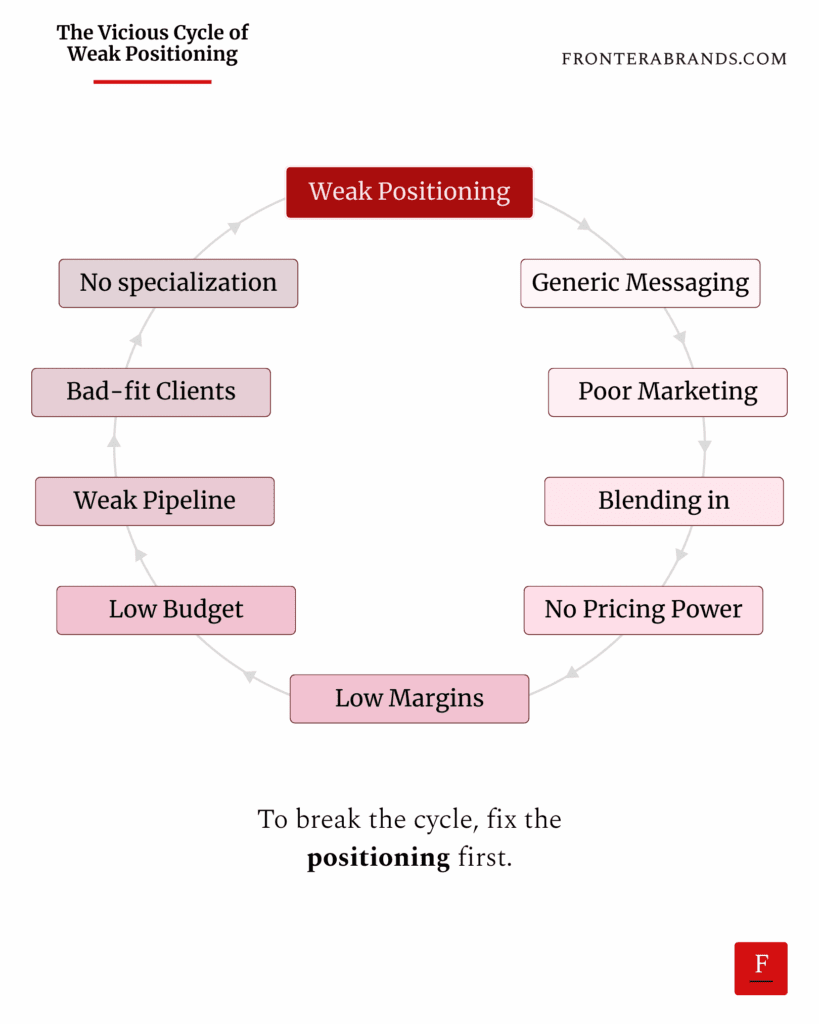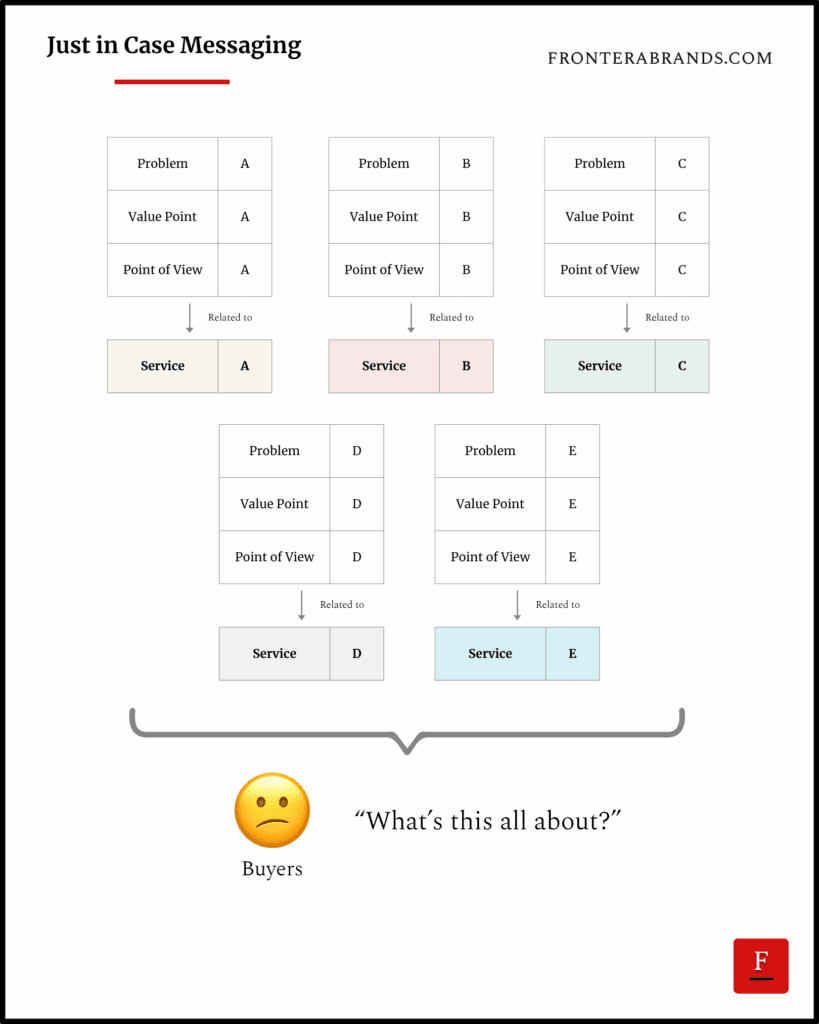♦️ Why credibility can't replace clarity in your messaging
|
Most marketers think social proof sells. But it doesn’t. It reassures. And this difference changes how to do messaging right. Imagine going to a B2B brand’s website. You’d like to figure out what they do. But you struggle. Because first, you read an aspirational mission statement that means nothing. Then they bombard you with social proof: “We helped this many clients.” “We generated this much revenue.” You keep scrolling to find an explanation of what the hell this brand does. But no chance. There are some vague words here and there. Besides that, social proof after social proof. You go to other pages hoping to find clear information. However, all you get is how much experience their team has and the universities they graduated from. So you regret that you lost a minute of your life. And leave the site. Now don’t get me wrong. Social proof matters and has its place. But some B2B brands do messaging as if social proof is the only thing that matters for a buyer to buy. They do messaging as if credibility can replace clarity. This creates a problem. Because social proof is good for handling late-stage objections. Especially for high-value B2B services. When a buyer is close to making the decision, and wants to be sure they are not making a mistake. In other words, when emotions about the purchase reach their peak. But when buyers first interact with a brand, they are trying to figure out the basics. Hence they have many early-stage objections. Whether about the problem you solve: “Is this really an issue for us?” Or about your solution: “How is this brand different from others?” When a brand doesn’t handle these early objections, buyers eliminate them in their minds. Because credibility doesn’t matter if they don’t understand the value. So brands have their marketing funnels. While buyers have their objection funnels.
Once you know their doubts at each stage, you can use them to increase your overall conversion in two ways: 1. Choose a positioning that minimizes objectionsWe’ve talked about Slack’s story. At first, it was positioned as an “internal chat app.” But forget about handling, this positioning has caused many new objections from buyers. These were early-stage objections about the problem Slack claimed to solve: Like “We don’t need another internal chat app.” Or “It’s just another distraction.” Social proof didn’t matter. Because buyers had strong objections about the problem it claimed to solve. But then Slack’s executives repositioned the tool as a new way of working against email. They changed the frame. So buyers stopped comparing it to other group chat apps. But they started comparing it to inefficient email. The new positioning automatically removed buyers’ main early-stage objections. And they adopted Slack. So once you map out your buyers’ possible objections, think about your positioning:
Based on these, find a frame that will resolve buyers’ early-stage doubts. So buyers can take you to a stage where social proof actually matters. 2. Align your messaging to their journeyKnowing buyers’ different stage objections enables you to do a key thing: Align your messaging to their journey. And use the right messages on the right channels. Is it a touchpoint where people are getting familiar with your brand, like your home page, top of the funnel ads, or most social media content? Focus on early-stage objections. Message on the problems you solve. Message on your differences and point of view. Because most buyers at those touchpoints are not considering your brand seriously yet. They are trying to figure out the problem you solve, if it’s worth solving, and alternative ways to solve it. That’s why leading with social proof doesn’t make sense. So instead, meet buyers where they are. Remove the frictions they feel with your messaging and guide them step by step towards choosing you. Remember. Social proof supports buying decisions. It doesn’t create them. So handle the early objections with your messaging first. Then let credibility reinforce the decision they already want to make. Most buyers don’t get your real value. That's killing your growthYou’re great at what you do. Your clients love you. But new prospects? They don't get it. They don't see why they should buy from you on your website, ads, or content. So they go with the big, familiar firms as the "safe" choice. Because your value is only as good as your messaging. If your website, ads, or content don't clearly show the real value of buying your solution, prospects won’t see it. You become just another provider. And that costs you sales without you knowing, every single day. We help B2B brands nail down their positioning and bring it to market with a message that makes buyers think: “This is exactly what we need.” So your marketing channels don’t just perform better — they sell. Want to stop losing sales to weak messaging? Fill out this form to book a 20-minute clarity call. You can reply to this email with your thoughts and feedback. I'd be happy to hear from you — I read and reply to all messages. And you can connect with me here on LinkedIn. Ozan |
Frontera
Join 10,000+ B2B founders getting the strategies of iconic brands.
In 1925, a rookie copywriter named John Caples had to sell something hard to sell: A mail-order piano course. He was barely a year into his job at the agency Ruthrauff & Ryan. The U.S. School of Music had knocked on their door. They wanted a campaign for their new self-study instrument courses. Caples needed an angle for his copy. Should he focus on how easy it makes learning? Should he focus on the lower price compared to hiring a tutor? Both were true. But none of it felt compelling. Caples...
Weak positioning causes a vicious cycle for every firm. It goes like this: You lack clarity around your ideal client profile, the specific problem you solve for them, and how you solve it differently. That causes you to have generic messaging. That causes your website, content, and ads to get ignored. That causes buyers to see you as interchangeable with hundreds of other firms. That causes you to lack pricing power. That causes you to have low margins. That causes you to have a low budget...
Boutique consulting firms make most of their revenue from a single service. But that core service gets only a tiny share of their messaging. You know why? Because they fear losing out. “What if somebody is looking for our other offers?” “What if we miss an opportunity?” So they list 10 services on their websites. Their content talks about 10 different value points related to different services. They hedge. But this ‘just in case’ messaging kills sales. Warren Buffett has a quote I like:...



